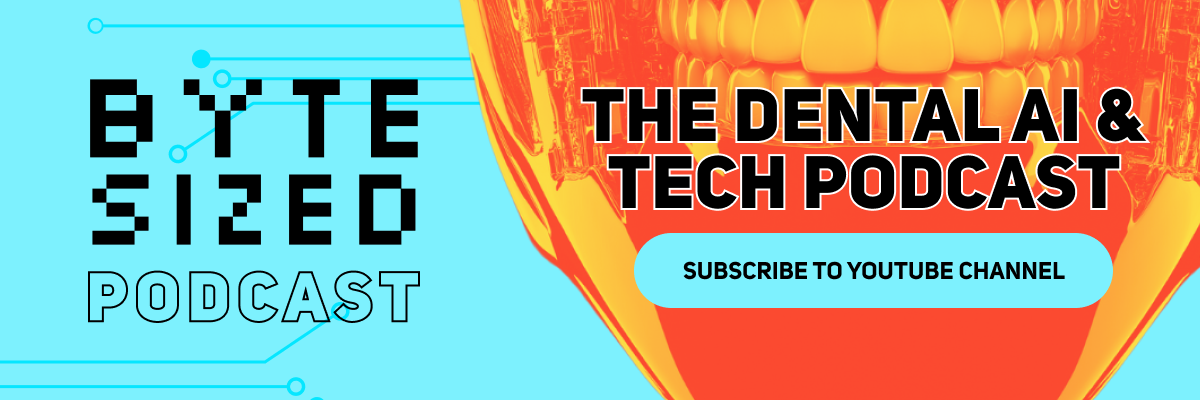
AI Traffic Trends Reveal a Shift
In 2025, the rise of generative AI tools like ChatGPT and Google Gemini is transforming how people search, click, and choose their healthcare providers. But here’s the surprising twist: while AI search is booming, more than 90% of AI traffic still comes from desktop devices, not mobile. Even more surprising? Google is the only major AI engine driving more mobile traffic than desktop referrals.
These evolving AI traffic trends reveal an important reality: dentists can no longer rely solely on traditional SEO tactics or assume patients are only searching on smartphones. To stay visible and competitive, you need to optimize your online presence for both AI-driven platforms and traditional search engines, and tailor your strategy to how people behave on desktop versus mobile.
In this post, we’ll break down what these trends mean for your dental practice and give you practical ways to keep your dental marketing one step ahead of the AI curve.
Table of Contents
AI Search Today: Desktop Dominates (But Mobile Is Where the Opportunity Lies)
While mobile devices still rule the internet overall, the story is different when it comes to AI search traffic trends. According to new research from BrightEdge, over 90% of referrals from AI search engines like ChatGPT, Bing, and Perplexity come from desktop users. That’s a major shift from traditional search behavior, where mobile typically takes the lead.
But there’s one standout exception: Google.
Google is currently the only major AI search engine sending more mobile traffic than desktop, with 53% of AI-driven referrals coming from mobile devices. This suggests Google is building a more seamless mobile AI experience, integrating tools like AI Overviews and Gemini directly into the mobile search results patients already use.
What This Means for Dentists
This creates both a challenge and an opportunity for dental practices:
- Challenge: Most AI-generated traffic isn’t happening where many assume—on mobile. If you’re only optimizing your dental website for mobile, you might miss out on valuable desktop visitors using AI tools.
- Opportunity: Google’s growing mobile AI capabilities make it the best place to focus if you want to capture AI traffic from mobile users searching for dental care.
Whether your ideal patient is researching treatment options on their home computer or looking up “dentist near me” while sitting in the car, your website needs to be AI-friendly and device-flexible. The key takeaway? Dentists need to stop thinking “mobile vs. desktop” and start thinking “AI everywhere.”
Device Context Matters: What Patients Want on Mobile vs. Desktop
- AI Overviews appear 39% more frequently than on mobile.
- They dominate the screen, taking up 80% more space, making educational content and detailed pages more valuable.
- Formatting is consistent, offering a clear reading experience.
On Desktop:
Understanding where your traffic comes from is only half the battle. The other half? Knowing what patients want when they land on your site, and that depends heavily on the device they’re using.
BrightEdge’s data shows that AI Overviews behave very differently across mobile and desktop, and that behavior reveals key insights into how people search for dental services on each device:
What this means for dentists:
Desktop is where patients go deep, researching dental implants, comparing treatments, or reading blog posts about tooth sensitivity. This is the perfect place to shine with rich content: FAQs, in-depth procedure pages, patient testimonials, and blog posts like the one you’re reading now.
On Mobile:
- AI Overviews appear 3x more often for ecommerce-style queries, like shopping or quick services.
- Presentation styles vary widely—Google is testing formats actively.
- Mobile behavior often favors quick decisions, location-based searches, and visual content.
What this means for dentists:
Mobile is about speed, convenience, and action. Patients are looking for quick answers like “dentist open now,” “emergency dental near me,” or trying to click a “Book Now” button. Here’s where your Google Business Profile, location info, and click-to-call features need to work flawlessly.
Takeaway: One Strategy Won’t Cut It
Your dental AI search optimization shouldn’t be one-size-fits-all. Patients use desktop to research and mobile to decide. That means your website, content, and local SEO need to serve both search intents—deep information for the curious and fast action for the ready-to-book.
Generative AI: ChatGPT Leads, But Google’s Gaining Ground
When most people think of generative AI, ChatGPT is still the first name that comes to mind, and for good reason. As of mid-2025, it’s holding strong at nearly 79% of all generative AI traffic. But the gap is closing. New data shows that Google’s share of AI search traffic is rising steadily, up from 5.4% to 8% in just six months.
Meanwhile, other players like DeepSeek and Grok (from X) are making waves, but none have yet matched Google’s momentum. This shift signals a growing trend: Google is becoming a true AI discovery platform, not just a traditional search engine.
What This Means for Dentists
Your patients aren’t just Googling your practice anymore. They’re interacting with AI-generated answers, summaries, and suggestions before they ever click on your website.
Here’s the kicker: ChatGPT and other AI tools like Perplexity still refer mostly from desktop, while Google’s AI is driving traffic from both desktop and mobile. That makes it the most accessible—and the most actionable—AI platform for local businesses like dental practices.
If your practice is already optimizing for Google Search (good job!), you’re halfway there. But as Google doubles down on tools like AI Overviews, Gemini, and conversational search, you need to go a step further by making your content easy for AI to understand and highlight.

ChatGPT may lead, but Google is where your patients are clicking, especially on mobile. Dentists who align their online presence with Google’s evolving AI ecosystem will win more traffic, more clicks, and ultimately more appointments.
Action Steps for Dental SEO in the Age of AI
By now, it’s clear that the AI-powered search revolution is fully underway. And while tools like ChatGPT and Google Gemini may feel abstract, they’re shaping how real patients find real dental practices every single day.
So how can your practice stay ahead of these evolving AI traffic trends? It starts with a few smart, tactical moves that blend traditional SEO with AI-aware optimization.
1. Design for Both Devices—Not Just One
AI traffic leans desktop for now, but Google’s mobile dominance means you must optimize for both.
- Responsive dental website design is a must: your site should load beautifully on all screen sizes.
- On mobile, highlight your services, booking options, and Google Maps presence.
- On desktop, offer rich, educational content like blog posts, treatment guides, and patient testimonials.
Tool Tip: Use PageSpeed Insights to audit performance.
2. Make Your Content AI-Friendly
AI search engines extract and summarize content. If your site isn’t structured clearly, you’re invisible.
- Write in conversational, natural language—answer real patient questions.
- Use headers, bullet points, and FAQs to improve skimmability.
- Add schema markup (especially LocalBusiness, Review, and FAQ types) so AI tools can “read” your content properly.
Pro Tip: Pages that win in AI summaries often use simple formatting + clear answers.
3. Prioritize Google for Mobile AI Traffic
Google is the only AI engine currently sending more mobile referrals than desktop. Capitalize on that.
- Optimize your Google Business Profile regularly (reviews, services, holiday hours).
- Upload photos and video walkthroughs to increase engagement.
- Use appointment links, call buttons, and FAQs—Google loves actionable info.
Reminder: Patients searching “dentist near me” will often see AI Overviews before your website. Make sure you show up in both.
4. Watch the Trends—And Your Analytics
Track where your patients are coming from and how they interact with your content.
- Use Google Analytics 4 to compare desktop vs. mobile traffic.
- Set up UTM tracking to identify referrals from AI tools like ChatGPT and Perplexity.
- Keep an eye on emerging platforms (like DeepSeek) that may start surfacing your site.
Insight: Even if you don’t see a huge spike in AI referrals today, positioning now pays off as traffic shifts continue.
The Bottom Line: Adapt Now, Thrive Later
The dental industry is no stranger to change—from digital X-rays to online scheduling—but the rise of AI traffic trends marks a new chapter in how patients find and choose their dentist.
Here’s what we now know:
- Desktop still dominates AI search traffic—but mobile is Google’s playground.
- Google’s AI presence is growing, making it the most strategic platform for visibility.
- Patients behave differently depending on their device, so your content and design must reflect that.
- The race between ChatGPT and Google is heating up, and your online presence is caught in the middle.
But worry not! This isn’t a trend to fear, it’s an opportunity to lead. Whether you’re running a solo practice, multi-location group, or specialty clinic, optimizing your content and user experience for AI-driven search ensures you stay one step ahead.
Frequently Asked Questions
What are AI traffic trends, and why should dentists care?
AI traffic trends refer to how users are interacting with AI-powered search tools like ChatGPT, Google Gemini, and other generative AI platforms. These trends reveal which platforms are sending traffic to websites—and from which devices (mobile vs. desktop). Dentists should care because these tools are changing how patients discover dental practices online. Understanding where your traffic comes from (and how AI platforms surface your content) can help you attract more new patients and stay visible with the latest AI dental tools.
How is Google’s AI search different from ChatGPT for dental websites?
Google’s AI (through features like AI Overviews and Gemini) is fully integrated into traditional search results—especially on mobile—meaning it can drive direct traffic to your dental website and Google Business Profile. ChatGPT, on the other hand, often keeps users in-app and primarily sends traffic from desktop. While ChatGPT dominates overall AI usage, Google is the only AI engine currently sending more mobile traffic than desktop, making it more valuable for capturing local, on-the-go patient searches.
How can I optimize my dental website for AI-generated search traffic?
To optimize your dental site for AI traffic:
- Use clear, conversational language that answers common patient questions.
- Add FAQ sections, headings, and bullet points for better structure.
- Implement schema markup (like LocalBusiness, Review, and FAQ schema).
- Keep your Google Business Profile up to date with services, reviews, and appointment links.
- Make sure your site loads quickly and looks great on both desktop and mobile.
These steps help AI tools understand your content and increase your chances of being featured in AI summaries, overviews, and search results.
About the Author: Megan Nielsen is an SEO strategist and the Grand Overlord of copywriting at My Social Practice. My Social Practice is a dental marketing company that offers a full suite of dental marketing services to thousands of dental practices throughout the United States and Canada.
![[Byte Sized Podcast Ep. 23] Frictionless Online Dental Scheduling: Why Your Practice Needs It Now Feat. Colin Ambler - AI traffic trends - My Social Practice - Social Media Marketing for Dental & Dental Specialty Practices online dental scheduling](https://mysocialpractice.com/wp-content/uploads/2025/12/byte-sized_ep23.png)





![[Byte Sized Podcast Ep. 23] Frictionless Online Dental Scheduling: Why Your Practice Needs It Now Feat. Colin Ambler - AI traffic trends - My Social Practice - Social Media Marketing for Dental & Dental Specialty Practices online dental scheduling](https://mysocialpractice.com/wp-content/uploads/2025/12/byte-sized_ep23-100x100.png)



